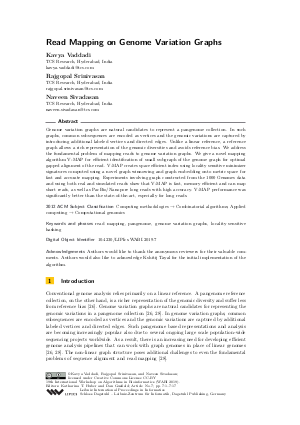@InProceedings{vaddadi_et_al:LIPIcs.WABI.2019.7,
author = {Vaddadi, Kavya and Srinivasan, Rajgopal and Sivadasan, Naveen},
title = {{Read Mapping on Genome Variation Graphs}},
booktitle = {19th International Workshop on Algorithms in Bioinformatics (WABI 2019)},
pages = {7:1--7:17},
series = {Leibniz International Proceedings in Informatics (LIPIcs)},
ISBN = {978-3-95977-123-8},
ISSN = {1868-8969},
year = {2019},
volume = {143},
editor = {Huber, Katharina T. and Gusfield, Dan},
publisher = {Schloss Dagstuhl -- Leibniz-Zentrum f{\"u}r Informatik},
address = {Dagstuhl, Germany},
URL = {https://drops.dagstuhl.de/entities/document/10.4230/LIPIcs.WABI.2019.7},
URN = {urn:nbn:de:0030-drops-110375},
doi = {10.4230/LIPIcs.WABI.2019.7},
annote = {Keywords: read mapping, pangenome, genome variation graphs, locality sensitive hashing}
}

 Creative Commons Attribution 3.0 Unported license
Creative Commons Attribution 3.0 Unported license





































